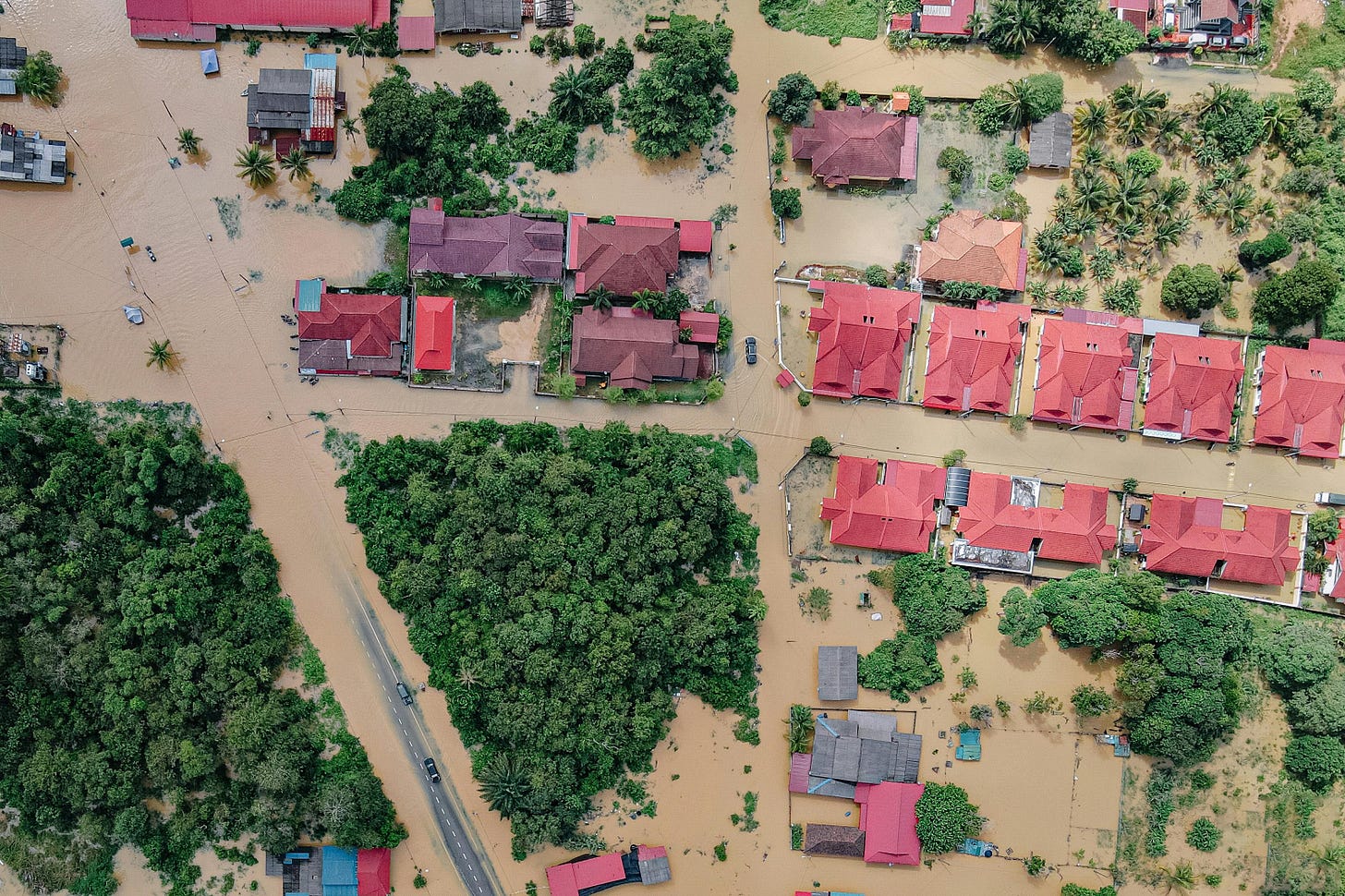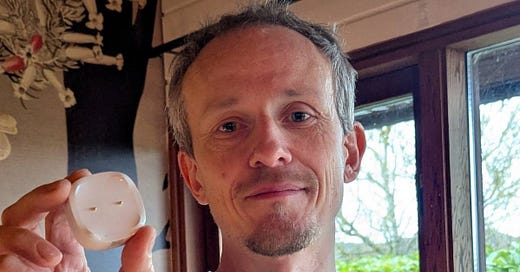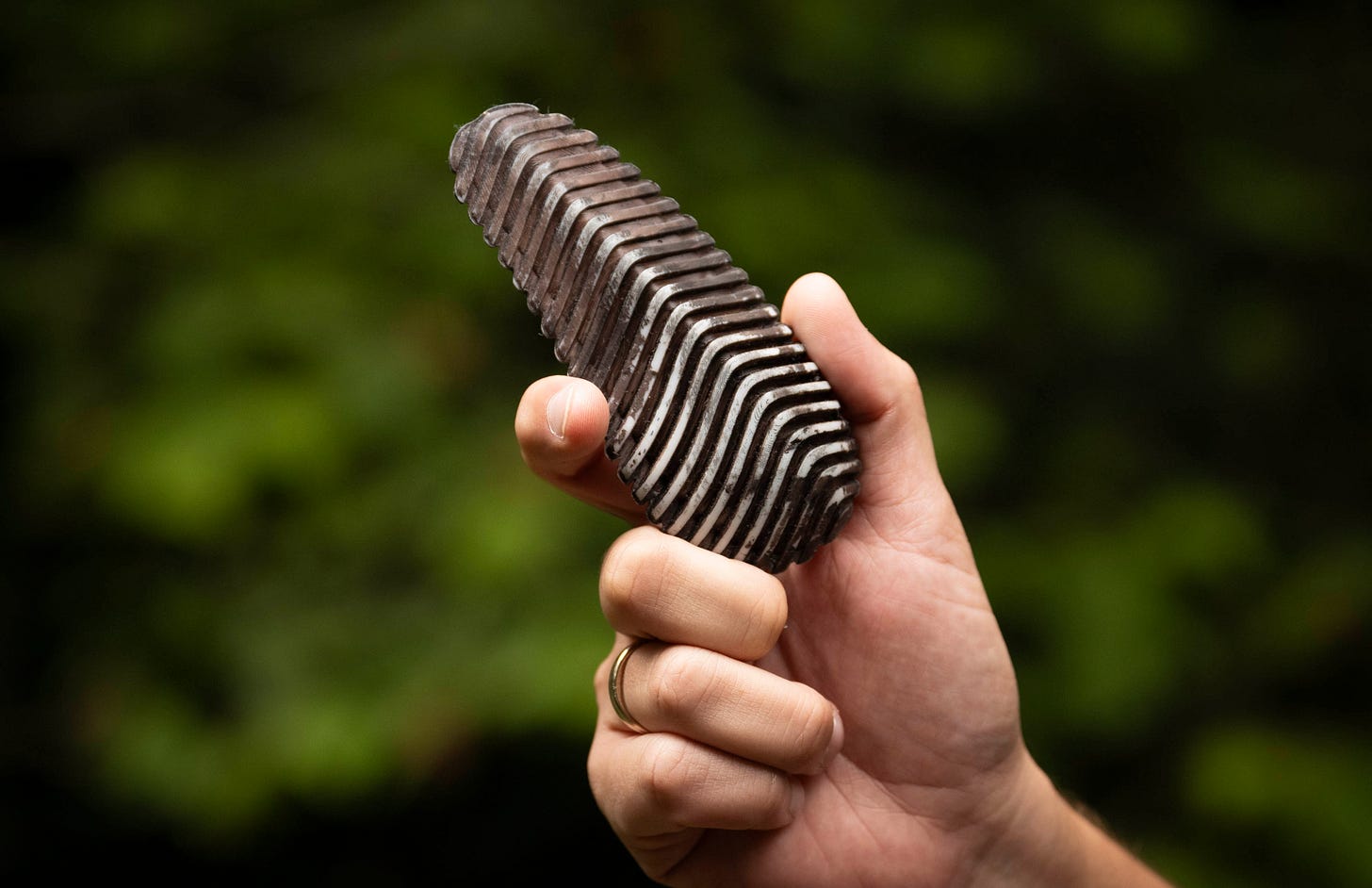Climate hazards: ‘This flood sensor saved my basement’
How gadgets could alert you to the effects of extreme weather
He didn’t know it yet but Aslak Grinsted’s basement was about to flood. Grinsted, a climate scientist at the Niels Bohr Institute in Copenhagen, was driving to work at the time – while filthy sewer water inched upwards in the drains at his house.
However, this grim liquid was actually getting closer and closer to flood sensors for those drains, which Grinsted had installed just weeks before. The sewage kept rising. And then: ping.
His smart home hub instantly sent out notifications to his and his family members’ mobile phones. Some of his lightbulbs also flicked over to a warning blue colour. Grinsted had set it all up after a previous flood in December 2024.
This time, while he didn’t see the notification on his own phone immediately, he picked up a call from his daughter who told him the flood was back. Grinsted turned his car around. He didn’t have a moment to lose.
Climate change is supercharging storms, heatwaves, wildfires and floods around the world. Homeowners have noticed. Many are taking steps to protect their property – and that includes installing hazard-sensing or alert systems. While such tech might not help in every situation, it could potentially save someone’s home, or even their life.
Before the deluge
When Grinsted arrived back at his house, he raced to his drains to see what was happening. This was definitely not a false alarm. A phone call yielded the services of a company that soon arrived to de-clog the mainline sewer near Grinsted’s house. “You had the combination of melting snow and rain,” he explains. “It couldn’t drain fast enough.”
Thankfully, with the sewer fixed, the drain water soon receded. Grinsted had held back the flood. “I’m just imaging all the damage that would have been caused. I’m so happy that I avoided that,” he says.
As a climate scientist, Grinsted had considered the possible impacts of extreme weather on his house when he chose it: “I actually bought a place that I thought would be very safe but the sewers, if they are blocked, [the water] cannot get away.”
He’s mindful of how this risk could increase in the coming years, as climate change makes Denmark, and many other countries, noticeably wetter. “I’m sure the rainfall and the heavy rains, they will become worse,” says Grinsted.

He paid about 100 Danish Krone (14 euros) for each of his three flood sensors, which connect to a pre-existing smart home system in his house. Some have a cable that he can dangle into his drains in order to detect rising water.
The sensors are so cheap that he has bought several and now has a collection of both Sonoff and Ikea devices, to see how they compare. Leak sensors can detect water dripping from pipes, a malfunctioning freezer or simply the arrival of water in any part of your home that’s supposed to stay dry.
Such a system might not be of much use if your house gets hit by a massive flash flood but for a slow-moving hazard like the one Grinsted faced, it provided just enough time for him to take action.
“I think it’s very sensible,” says Hannah Cloke, a hydrologist at the University of Reading, who points out that extreme weather warnings are not readily available to people in every part of the globe. This is something the World Meteorological Organization hopes to change through its Early Warnings for All initiative.
Climate hazard sensors are sometimes installed at the community level. Many rivers already have flood detection systems along their banks, such as the North Rukuru and South Rukuru rivers in Malawi. And in Florida, researchers have trialled using storm surge sensors on bridges in coastal areas.
Watch out
Elsewhere, wildfires are the greater threat. In January, some residents of Los Angeles depended on the Watch Duty app for updates about how the wildfires there were advancing through the city’s suburbs. Watch Duty relies on data from a range of sources, including satellite imagery, radio scanners and fire watchers in the field.
For an early warning in a specific area, discreet fire sensors might prove useful in the future. Pyri is a biodegradable heat detector developed by students in the UK. The device is made mostly of wax and charcoal moulded into a leaf-like shape. It simply lies on the ground outside waiting for a fire. Should an inferno come, the wax melts and triggers a radio signal from the device, intended to alert nearby homes or communities. While not yet commercially available, Pyri won a Dyson award last year.
“It’s a really good idea if you can do it because you can get more localised information straight to your own house,” says Cloke, referring to extreme weather warning sensors generally. “That’s exactly the type of detail that you need to make decisions about your own property.”
Homeowners are accustomed to having smoke and carbon monoxide alarms but they might not immediately think to install extreme weather sensors, too, says William Travis, who studies climate change, risk and decision analysis at the University of Colorado Boulder. “I’m a little bit sceptical of these small-scale systems and what they can do,” he says. “Unless you have a plan for responding.”
However, Travis uses a sensor-based system himself. He has a temperature monitor connected to some of the water pipes at his house, in order to detect when they drop below freezing during the winter. “I actually do have a plan,” he adds, explaining that he knows how to defrost his pipes: “I’ll use my wife’s hairdryer.”
Climate impact scale
In 2013, Travis published a paper in which he argued that a raft of warnings about worsening climate change were already emerging from climate researchers and journalists – but not in a systematic way, with a universally-adopted design or scale-based guide.
Climate scientists might consider developing an equivalent of the 10-level Torino scale, he suggested, which defines the risk of a particular asteroid or comet slamming into Earth.
Travis adds that, in the meantime, cheap sensors could come in handy for homeowners so long as they are thoughtfully deployed. Ensuring weather and hazard sensors don’t generate too many false alarms is important, he stresses, in order to reduce the chance of a system crying wolf, which could lead to genuine alerts being ignored.
Grinsted is certainly convinced of his sensors’ usefulness. He even says he’s thought about using leak sensors at his workplace, so that he can make sure there are no leaks near the freezers containing ice cores that he and his colleagues’ use in their climate research.
“It is so cheap,” he says. “And, given how expensive it is once you have that kind of damage, then you should [install some sensors] – if there’s any risk at all.”
Further reading on this week’s story
Last year, I wrote an article for BBC News about the proliferation of satellites operated by African nations. One of the big attractions for these countries is to have better data on extreme weather, in order to improve early warning systems.
Redditors have discussed how to automate the opening or closing of windows and blinds in their homes, which could help keep their properties cool during a heatwave.
Thanks for reading! If you enjoyed this story, don’t forget to share it with your friends and colleagues. You can also subscribe to The Reengineer and follow me on Bluesky.






